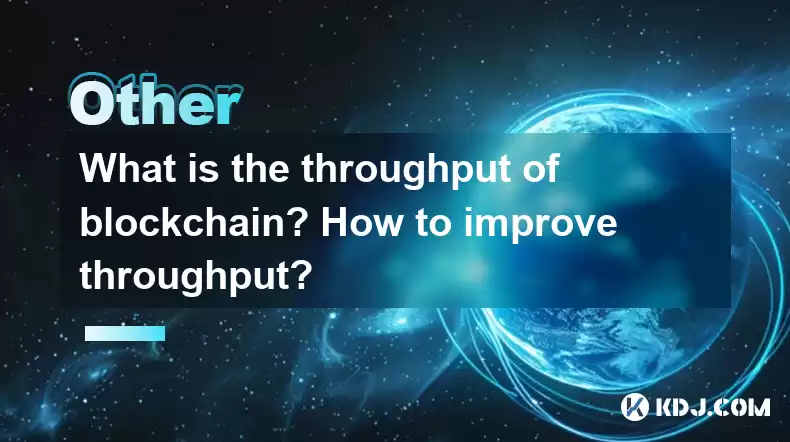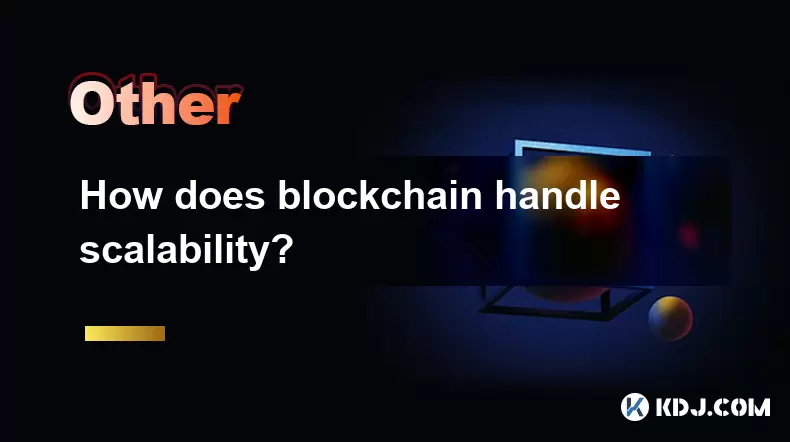-
 Bitcoin
Bitcoin $112400
-1.07% -
 Ethereum
Ethereum $3409
-3.27% -
 XRP
XRP $2.784
-6.60% -
 Tether USDt
Tether USDt $0.9997
-0.03% -
 BNB
BNB $739.3
-2.09% -
 Solana
Solana $158.0
-2.90% -
 USDC
USDC $0.9998
-0.02% -
 TRON
TRON $0.3213
-0.94% -
 Dogecoin
Dogecoin $0.1929
-5.01% -
 Cardano
Cardano $0.6974
-2.82% -
 Hyperliquid
Hyperliquid $36.69
-2.31% -
 Sui
Sui $3.327
-4.80% -
 Stellar
Stellar $0.3672
-5.18% -
 Chainlink
Chainlink $15.65
-3.07% -
 Bitcoin Cash
Bitcoin Cash $525.0
-1.68% -
 Hedera
Hedera $0.2291
-6.00% -
 Avalanche
Avalanche $20.91
-2.96% -
 Ethena USDe
Ethena USDe $1.000
0.00% -
 Toncoin
Toncoin $3.520
-1.12% -
 UNUS SED LEO
UNUS SED LEO $8.968
0.14% -
 Litecoin
Litecoin $105.7
0.26% -
 Shiba Inu
Shiba Inu $0.00001181
-1.79% -
 Polkadot
Polkadot $3.492
-2.08% -
 Uniswap
Uniswap $8.800
-3.10% -
 Dai
Dai $0.9999
-0.01% -
 Monero
Monero $289.9
-3.17% -
 Bitget Token
Bitget Token $4.243
-1.27% -
 Pepe
Pepe $0.00001006
-3.67% -
 Cronos
Cronos $0.1248
-5.68% -
 Aave
Aave $249.7
-2.50%
What is the throughput of blockchain? How to improve throughput?
Blockchain throughput, measured in TPS, is vital for scalability; improvements can be made by increasing block size, reducing block time, and using off-chain solutions like the Lightning Network.
Apr 27, 2025 at 03:57 pm

What is the Throughput of Blockchain? How to Improve Throughput?
Throughput in the context of blockchain refers to the number of transactions that a blockchain network can process per second (TPS). This metric is crucial as it directly affects the scalability and efficiency of a blockchain system. A higher throughput means that the network can handle more transactions, making it more suitable for widespread adoption and use in various applications.
Understanding Blockchain Throughput
Blockchain throughput is influenced by several factors, including block size, block time, and the consensus mechanism used by the network. For instance, Bitcoin, one of the earliest and most well-known blockchains, has a throughput of around 7 TPS due to its design choices, such as a 10-minute block time and a block size limit of 1 MB. On the other hand, newer blockchains like Ethereum have aimed to improve upon this, with Ethereum 1.0 achieving around 15-20 TPS.
Factors Affecting Blockchain Throughput
Several elements contribute to the throughput of a blockchain network:
Block Size: Larger blocks can contain more transactions, increasing the throughput. However, larger blocks also mean more data to propagate across the network, which can lead to centralization if only nodes with high bandwidth can keep up.
Block Time: The time it takes to mine a new block directly impacts throughput. Shorter block times can increase the number of transactions processed per second, but they can also increase the likelihood of orphaned blocks.
Consensus Mechanism: The method used to validate transactions and add them to the blockchain can significantly affect throughput. Proof of Work (PoW), used by Bitcoin, is slower and more energy-intensive compared to Proof of Stake (PoS), which is used by newer blockchains like Ethereum 2.0.
Network Congestion: High demand for transactions can lead to network congestion, where transactions are queued and processed slower, reducing effective throughput.
Methods to Improve Blockchain Throughput
Improving blockchain throughput is a major focus for many developers and researchers. Here are some strategies that have been proposed and implemented:
Increase Block Size
One straightforward way to increase throughput is to increase the block size. This allows more transactions to be included in each block, thereby increasing the overall TPS. However, this approach must be balanced with the need to maintain decentralization, as larger blocks can disadvantage nodes with lower bandwidth.
Reduce Block Time
Reducing the block time can also boost throughput. Shorter block times mean more blocks can be added to the chain in a given period, allowing for more transactions to be processed. However, this must be done carefully to avoid increasing the rate of orphaned blocks, which can destabilize the network.
Implement Off-Chain Solutions
Off-chain solutions, such as the Lightning Network for Bitcoin and sidechains for Ethereum, can significantly improve throughput. These solutions process transactions outside the main blockchain, reducing the load on the network and allowing for faster and cheaper transactions. To use the Lightning Network, for example, follow these steps:
- Open a Channel: Two parties open a payment channel by locking funds into a multi-signature wallet.
- Conduct Transactions: The parties can then conduct multiple transactions off-chain, updating the balance in the channel without broadcasting to the main blockchain.
- Close the Channel: When finished, the final state of the channel is broadcast to the blockchain, settling the transactions.
Use Sharding
Sharding is a technique where the blockchain is split into smaller pieces, or shards, each capable of processing its own set of transactions. This parallel processing can significantly increase the overall throughput of the network. Ethereum 2.0, for instance, is implementing sharding to improve its scalability.
Switch to More Efficient Consensus Mechanisms
Switching to more efficient consensus mechanisms like Proof of Stake (PoS) or Delegated Proof of Stake (DPoS) can also enhance throughput. These mechanisms are less resource-intensive than Proof of Work (PoW) and can process transactions more quickly. Ethereum's transition to PoS with Ethereum 2.0 is expected to increase its throughput substantially.
Implement Layer 2 Scaling Solutions
Layer 2 scaling solutions, such as state channels and rollups, are designed to process transactions off the main blockchain, reducing the load and increasing throughput. Rollups, for instance, batch multiple transactions into a single transaction on the main chain, which can significantly increase the number of transactions processed per second.
Practical Implementation of Throughput Improvement
To practically implement some of these improvements, let's consider the example of setting up a Lightning Network channel on Bitcoin:
- Install a Lightning Network Wallet: Choose a wallet that supports the Lightning Network, such as Zap or Muun.
- Fund the Wallet: Transfer Bitcoin to the wallet to fund it.
- Open a Channel: Use the wallet to open a payment channel with another party. This involves selecting the amount of Bitcoin to lock into the channel and the counterparty's public key.
- Conduct Transactions: Once the channel is open, you can send and receive payments instantly and with minimal fees.
- Close the Channel: When you're done, close the channel to settle the final balance on the Bitcoin blockchain.
Frequently Asked Questions
Q: How does blockchain throughput affect transaction fees?
A: Higher throughput generally leads to lower transaction fees because the network can process more transactions per second, reducing the competition for block space. Conversely, lower throughput can result in higher fees due to increased demand for limited block space.
Q: Can increasing block size lead to centralization?
A: Yes, increasing block size can lead to centralization because larger blocks require more bandwidth and storage. Nodes with limited resources may struggle to keep up, potentially leading to a network dominated by nodes with more significant capabilities.
Q: What is the difference between on-chain and off-chain scaling solutions?
A: On-chain scaling solutions involve changes to the main blockchain protocol, such as increasing block size or reducing block time. Off-chain scaling solutions, like the Lightning Network or sidechains, process transactions outside the main blockchain, reducing the load and increasing throughput without altering the main chain's protocol.
Q: How does sharding work in Ethereum 2.0?
A: In Ethereum 2.0, sharding involves dividing the network into multiple shards, each capable of processing its own set of transactions. This parallel processing increases the overall throughput of the network. Each shard maintains its own state and transactions, and a cross-shard communication protocol ensures that transactions can be processed across different shards.
Disclaimer:info@kdj.com
The information provided is not trading advice. kdj.com does not assume any responsibility for any investments made based on the information provided in this article. Cryptocurrencies are highly volatile and it is highly recommended that you invest with caution after thorough research!
If you believe that the content used on this website infringes your copyright, please contact us immediately (info@kdj.com) and we will delete it promptly.
- BlockDAG, SEI, Ethena: Top Crypto Performers Under the Microscope
- 2025-08-03 10:50:16
- Bitcoin Blasts Past $119K: How Institutional Adoption and Macro Shifts Fuel the Fire
- 2025-08-03 10:55:16
- Crypto, Grok, and August: Decoding the Latest Trends and Insights
- 2025-08-03 11:10:16
- Crypto, Phishing, and Your Wallet: A New Yorker's Guide to Staying Safe
- 2025-08-03 10:30:16
- Troller Cat Meme Coin Presale Soars: A New King in the Crypto Jungle?
- 2025-08-03 10:30:16
- Grayscale, Altcoin Trust, and Mid-Cap Mania: What's the Deal?
- 2025-08-03 08:50:16
Related knowledge

What is the difference between on-chain and off-chain transactions?
Aug 02,2025 at 04:22pm
Understanding On-Chain TransactionsOn-chain transactions refer to digital asset transfers that are recorded directly on a blockchain ledger. These tra...

What is the double-spending problem and how does blockchain prevent it?
Aug 02,2025 at 01:07pm
Understanding the Double-Spending ProblemThe double-spending problem is a fundamental challenge in digital currency systems where the same digital tok...

What is the difference between a blockchain and a database?
Aug 01,2025 at 09:36pm
Understanding the Core Structure of a BlockchainA blockchain is a decentralized digital ledger that records data in a series of immutable blocks linke...

How does blockchain handle scalability?
Aug 02,2025 at 02:58pm
Understanding Blockchain Scalability ChallengesBlockchain scalability refers to a network's ability to handle an increasing volume of transactions wit...

What are the different types of blockchains?
Aug 03,2025 at 03:01am
Public Blockchains: Open and Decentralized NetworksPublic blockchains are the most widely recognized type of blockchain, characterized by their open a...

What is a hash in a blockchain?
Aug 02,2025 at 05:28am
Understanding the Concept of Hash in BlockchainA hash in the context of blockchain technology refers to a unique digital fingerprint generated by a cr...

What is the difference between on-chain and off-chain transactions?
Aug 02,2025 at 04:22pm
Understanding On-Chain TransactionsOn-chain transactions refer to digital asset transfers that are recorded directly on a blockchain ledger. These tra...

What is the double-spending problem and how does blockchain prevent it?
Aug 02,2025 at 01:07pm
Understanding the Double-Spending ProblemThe double-spending problem is a fundamental challenge in digital currency systems where the same digital tok...

What is the difference between a blockchain and a database?
Aug 01,2025 at 09:36pm
Understanding the Core Structure of a BlockchainA blockchain is a decentralized digital ledger that records data in a series of immutable blocks linke...

How does blockchain handle scalability?
Aug 02,2025 at 02:58pm
Understanding Blockchain Scalability ChallengesBlockchain scalability refers to a network's ability to handle an increasing volume of transactions wit...

What are the different types of blockchains?
Aug 03,2025 at 03:01am
Public Blockchains: Open and Decentralized NetworksPublic blockchains are the most widely recognized type of blockchain, characterized by their open a...

What is a hash in a blockchain?
Aug 02,2025 at 05:28am
Understanding the Concept of Hash in BlockchainA hash in the context of blockchain technology refers to a unique digital fingerprint generated by a cr...
See all articles

























































































